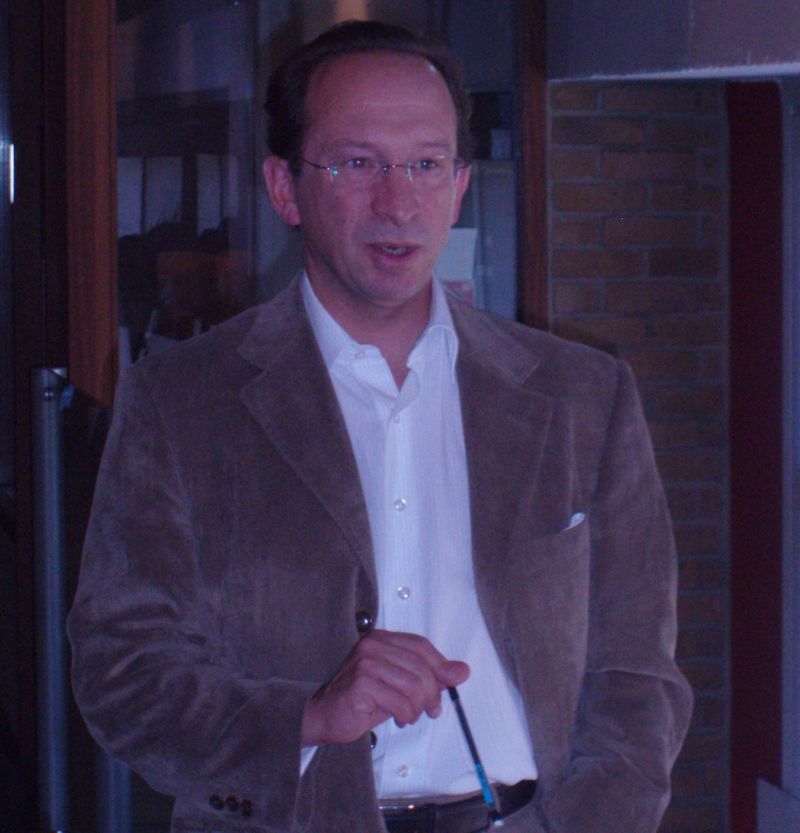London, 8th October 2009
Philipponnat is one of the very few family-run Champagne companies left and they have been in Champagne since 1532 when their family moved to Aÿ. In 1910 they moved 10km down the road to Mareuil-sur-Aÿ and in 1935 they acquired the prestigious ‘Clos de Goisses’ single vineyard. This is the jewel in the crown for them, as a single vineyard producing ripe Pinot Noir grapes is very rare in Champagne.
They are a medium-sized company with an annual production of 600,000 bottles, so they are medium sized by Champagne standards. They manage to supply one third of their own grapes which in Champagne where wine grape prices are some of the highest in the world is also quite a rare thing and gives them a degree of independence.
Charles said the house style they are aiming is based upon an intensity of taste that comes from a high percentage of Pinot Noir fruit in their blend. They are a traditional house but avoid premature oxidation because Charles believes oxidation will come naturally with time. He is looking for freshness and liveliness on the palate.
They sell a large range of different champagne styles, making between 8-10 different styles which will soon be extended further to 11-12 different styles.
One of the very good things they do (and they have been doing this for 20 years) is put the date of disgorgement on each bottle of Champagne. This practice has been spreading among other Champagne houses in the last 5 years so Philipponnat have been ahead of the game.
Why is this important? Because it denotes openness and honesty and a care for the attention to detail with regard to the Champagne they are producing which hasn’t always been as forthcoming as you might expect in Champagne.
Charles had some interesting things to say about consumers’ wine tastes in different countries. For him the British taste in Champagne is for relatively big but crisp, mouth-filling wines, whereas the US taste is for young and sweeter champagnes. Traditionally the Russian taste was for very sweet and mature wines and the French also liked mature wines with some sweetness but not as much as the Russians. Nowadays he says the style of most Champagne follows the British taste and is more in the direction of drier and fuller styles.
One thing I (and many sommeliers) really like about their philosophy is their openness and the detailed information they put on the back label. Along with the disgorgement date they put the year of the base wine and the percentage of reserve wines added at the end to adjust the blend, together with the percentage of the varieties in each blend.
As Charles explains “Most enlightened consumers want to know how the wines they drink are made”. I absolutely agree with him that there should be more openness and integrity about letting the consumer know which winemaking practices have been used, especially if there is nothing to hide, thus enabling the consumer to make a proper choice. Those customers who don’t wish to know simply don’t need to read the back label. As it stands though, very many wines (not only champagne) have no back label at all.
Winemaking
All champagne has to be hand-picked by law and is never destemmed but whole-bunch pressed. De-stemming extracts bitter phenolics and flavours which would be magnified by the presence of bubbles.
Philipponnat use only the cuvée (the very gently pressed part of the must) which is only 52% of the must. They inoculate the cuvée with yeast to start the first fermentation which lasts about a week. The only other additives they use at this stage would be some SO2 to prevent oxidation of the must.
After the alcoholic fermentation has finished they will either decide to do malolactic fermentation (MLF) or not. If they decide not to they will rack and chill the wine to 11-12o C to prevent MLF from taking place. If they do decide to do MLF, they do it in stainless steel and keep it at 21-22o C because they want MLF to happen quickly to avoid the yoghurty, cheesy aromas and flavours that you can sometimes get with this MLF.
When it comes to adjusting the final blend with the dosage, they differ from many other Champagne houses and only use new wines and make the liqueur d’expedition fresh and at the time of the adjustment. Most Champagne houses use older, reserve wines with the addition of the sweetening wine to iron out differences in the vintage for the non-vintage wines and to produce a consistent house style. Philipponnat’s method suggests great confidence and belief in the quality of the base wine and again fits in perfectly with the honesty and integrity of their approach.
© 2009 – 2012, Susan Hulme MW. All rights reserved.

